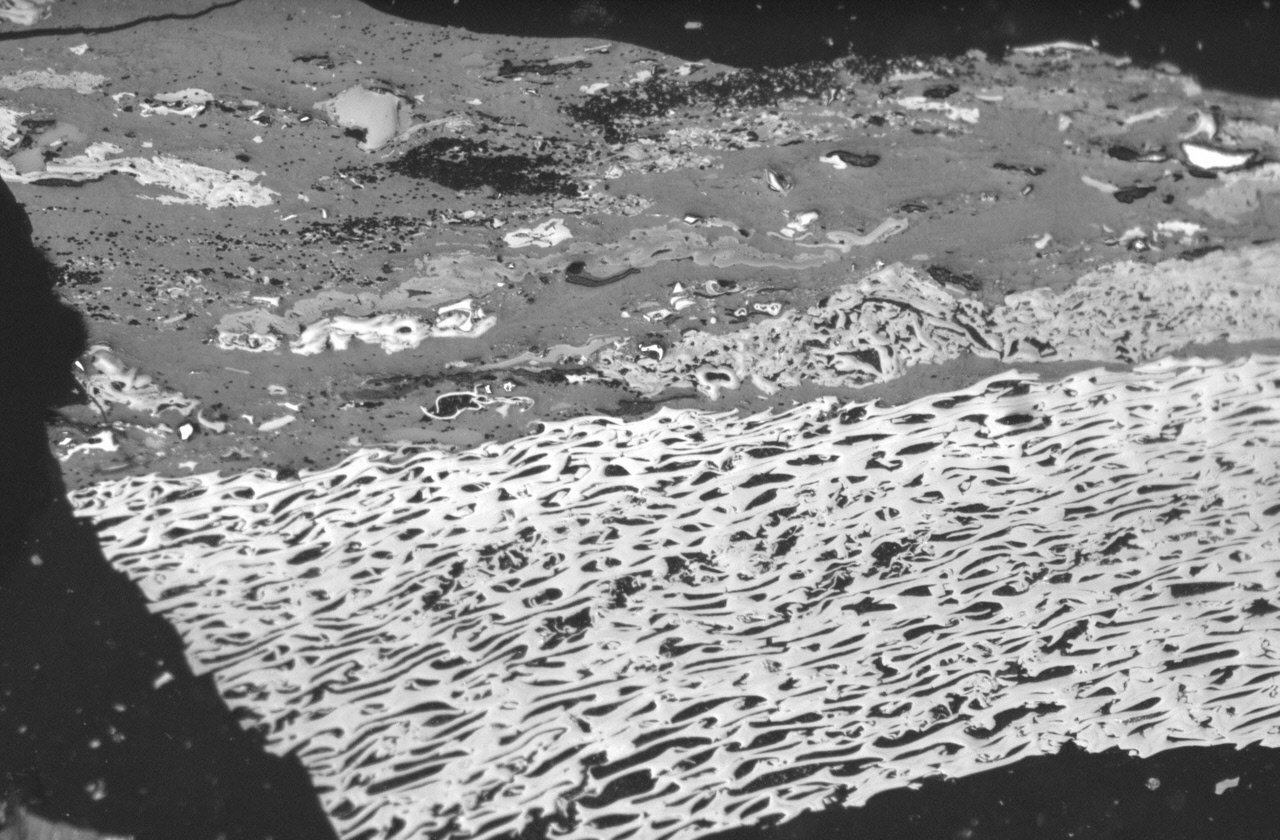The Society of Reflective Personalities - Fusinite
The Scorched Stoic
Personality:
Fusinite is the one who has earned his place at the table the hard way. Heat left its mark long before burial ever did, and he carries that history in every crisp cell wall and hollowed corner. He doesn’t brag about it; he doesn’t need to. His structure does the talking.
He stands out whether he wants to or not—brighter, harder, and more reflective than most. And when he finally says something, it comes out as a range rather than a point: uneven, high-valued truth shaped by where the fire ran hottest.
He isn’t distant, he just speaks with restraint. When Resinite bubbles over with enthusiasm, Fusinite offers a patient nod. When Collodetrinite mutters about cohesion, Fusinite quietly acknowledges that survival takes many forms. His humour sits in the dry cracks between the cell walls.
Yet, for all his solemnity, he has the driest wit in the Society. If someone asks how he’s doing, he’ll raise an eyebrow and answer, “A bit overcooked, but still structurally sound.”
Scientist’s Note:
Fusinite belongs to the inertinite group and originates from ligno-cellulosic cell walls, typically those of woody tissues. Its botanical affinities can sometimes be recognised when the original cellular architecture remains intact; the resistant, lignified portions of these walls are the parts that “survived” the fusinitization process.
Fusinite most commonly forms through incomplete combustion during wildfires, producing fossil charcoal. However, some occurrences may also develop through biochemical decarboxylation, dehydration, or weathering of plant tissues (ICCP, 2001). Whatever the pathway, fusinite records the imprint of alteration—either by flame or by decay—preserving a history written in carbon.
Under reflected light, fusinite appears greyish white to yellowish white with high reflectance that increases with rank. It is usually non-bireflectant, though faint bireflectance may appear along cell-wall margins in anthracitic coals. It does not fluoresce, displays high polishing hardness, and stands in strong relief on polished surfaces.
Beyond classical coal petrology, fusinite has resurfaced in broader scientific discussions: charcoal–wildfire relationships, mass extinctions, and paleoclimate reconstructions continue to attract renewed attention. Biochar is frequently considered an analogue of fusinite because of its stability and long-lived carbon storage potential.
When fusinite looks dull, check the polish. Some surfaces only reveal their history when you prepare them with care.
Recommended reading:
Although this description follows the ICCP (2001) approach to fusinite characterization and derivation, its origin remains a topic of debate. It is useful to engage with alternative interpretations when studying this maceral.
ICCP, 2001. The new inertinite classification (ICCP System 1994). Fuel 80, 459-471.
Scott, A.C., Glasspool, I.J., 2007. Observations and experiments on the origin and formation of inertinite group macerals. International Journal of Coal Geology 2007, 53-66.
O'Keefe, J.M.K., Bechtel, A., Christianis, K., Dai, S., DiMichele, W.A., Eble, C.F., Esterle, J.S., Mastalerz, M., Raymond, A.L., Valentim, B.V., Wagner, N.J., Ward, C.R., Hower, J.C., 2013. On the fundamental difference between coal rank and coal type. International Journal of Coal geology 118, 58–87.
Others:
Jones, T.P., Chaloner, W.G., 1991. Fossil charcoal, its recognition and palaeoatmospheric significance. Global and Planetary Change 5, 39-50.
Moroeng, O.M., Moore, T.A., Shen, J., Esterle, J.S., Liu, J., 2025. Isotopic and petrographic implications for fire type, temperature and formation of degradosemifusinite in fusain layers from an Early Cretaceous coal bed, Hailar Basin, Inner Mongolia, China. Fuel 384, 133895.
Petersen, H.I., Stokes, M.R., Hackley, P.C., Rudra, A., Zhou, Z., Sanei, H., 2025. Micro-Raman indicates biochar has similar stability and structural features as natural fusinite and semifusinite. International Journal of Coal Geology 304, 104769.





